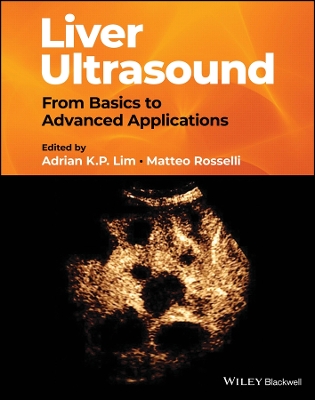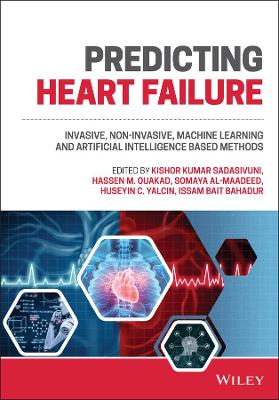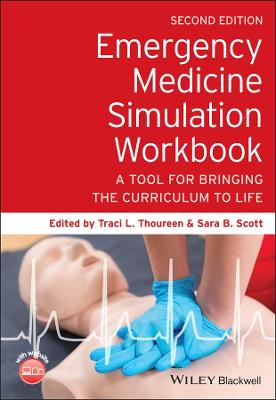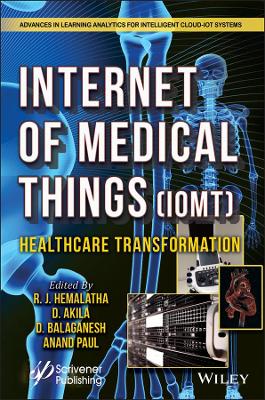Health Care Information Systems
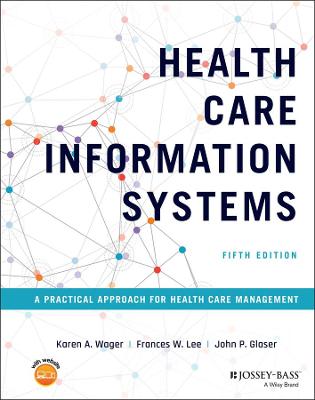 -15%
portes grátis
-15%
portes grátis
Health Care Information Systems
A Practical Approach for Health Care Management
Glaser, John P.; Wager, Karen A.; Lee, Frances W.
John Wiley & Sons Inc
03/2022
416
Dura
Inglês
9781119853862
15 a 20 dias
1090
1.1 MIPS Value Pathways: Surgical example 10
2.1 2015 EHR certification criteria 25
2.2 2020 approved CMS accrediting organizations 31
3.1 Major types of quality measures 51
3.2 Selected 2019 Medicaid Promoting Interoperability eCQMs 53
3.3 Core metrics for health and health care progress 58
3.4 Whole System Measures 2.0: Measures to assess health system performance on the Triple Aim 59
4.1 Percent of US nonfederal acute care hospitals that often or sometimes send or receive summary of care records with sources outside their hospital system by method in 2019 68
4.2 Selected HIT SDOs 76
4.3 Singh and Sittig Sociotechnical dimensions 80
4.4 Developer and Provider processes for usability and safety across the EHR product life cycle stages 82
5.1 IT initiatives linked to organizational goals 94
5.2 Summary of the scope of outpatient care problems 99
5.3 Assessment of telehealth strategic opportunities 106
5.4 Summary of IT strategic planning 106
6.1 The foundation for successful strategic application of information technology 115
6.2 Target increases in an IT operating budget 124
7.1 Sample criteria for evaluation of RFP responses 154
9.1 Tangible and intangible IT value 190
9.2 Financial analysis of a patient accounting document imaging system (in dollars) 198
9.3 Requests (in $ thousands) for new information system projects 200
10.1 Characterization of information technology function from the Patient Engagement Framework and frequency of adoption, ordered by level of engagement 219
10.2 Reported online health record functionalities used by individuals among those who were offered and accessed their record, 2017 222
10.3 Percent of nonfederal acute care hospitals that enabled patient electronic access to health information by type of care setting, 2019 222
10.4 Models of PGHD use 228
10.5 Challenges to PGHD use and suggested solutions 228
10.6 Overview of process for implementing PGHD into clinical care 230
11.1 Example population health reports 244
12.1 HIPAA Privacy Rule public interest and benefit exceptions 265
12.2 HIPAA violation categories 268
12.3 Fines levied for HIPAA violations in 2020 269
12.4 NIST Cybersecurity Framework Profile with gap analysis 280
12.5 Health industry cybersecurity practices 282
13.1 Platform types 302
14.1 List of cases and corresponding chapters 310
A.1 IT interests of different health care organizations 347
A.2 Changes in application focus resulting from changes in the health care business model 349
A.3 Major health care IT vendors, ranked by revenue 351
B.1 Revision history 358
B.2 Issue management 363
Figures
1.1 Schematic representation of relationships among IT, HCIS, EHR, and clinical applications 4
1.2 Stages of CMS EHR incentive programs 8
1.3 Estimated EHR adoption rates by decade 11
2.1 Sample EHR information screen 18
2.2 Sample EHR problem list 18
2.3 Sample EHR progress notes 19
2.4 Sample EHR lab report 20
2.5 Sample drug alert screen 23
2.6 Sample heart failure and hypertension query screen 24
2.7 Clinical decision support system 28
3.1 Learning health systems 42
3.2 Population health contributing factors 45
3.3 Screenshot from NQF 55
3.4 Digital Quality Utility 57
4.1 Percent of US nonfederal hospitals that often or sometimes send summary of care records by method type, 2017-2019 69
4.2 Percent of US nonfederal hospitals that often or sometimes receive summary of care records by method type, 2017-2019 69
4.3 Relationships among RCE, QHINs, QHIN-participating HIEs, and the HIEs' potential members 71
4.4 USCDI v1 summary of data classes and data elements 74
4.5 Schematic representation of C-CDA 75
4.6 HIT Quality and Safety Improvement Framework 81
4.7 Introduction of patient safety issues during development, implementation, and use of EHR systems 83
5.1 Overview of IT strategy development 100
5.2 IT Initiative Priorities 107
5.3 IT Plan Timetable and Budget 108
6.1 (repeated from Chapter 5) Overview of IT strategy development 114
6.2 Impact organizational IT competency on organizational performance 118
6.3 IT budget decision-making process 125
6.4 Example IT organization chart 128
6.5 Average IT budget as a percent of revenue 137
7.1 Systems development life cycle 145
7.2 Vendor pricing template 156
7.3 System usability scale questionnaire 158
7.4 Cost-benefit analysis 159
7.5 Example of a simple Gantt chart 161
8.1 Kotter's Change Management Model 167
8.2 Project timeline with project phases 178
8.3 Registration workflow example 180
9.1 IT investment portfolio 205
9.2 Days in accounts receivable 206
9.3 Digital intensity versus transformation intensity 210
10.1 Patient Engagement Framework 219
10.2 Sample Menu of Information in Patient Portal 221
10.3 PGHD enabling factors 227
11.1 Job Growth of Computer and Information Research Scientists (Percent change in employment, projected 2020-2030) 238
11.2 Health care data to health care knowledge 239
11.3 Social determinants of health 242
11.4 Data warehouse technology foundation 245
11.5 Example report on hospital patient trends 245
11.6 Focus of analytics and dashboards 246
11.7 Prescriptive discharge model 247
11.8 Growth in health care data 248
12.1 2020 Percentage of Data Breaches and Breached Records by Cause (n = 293 million) 274
13.1 Technology Hype Cycle for payers 291
13.2 Increase in telehealth visits in the early days of COVID 296
13.3 Categories of artificial intelligence 299
A.1 Digital health market segments based on industry category 348
A.2 Digital health market segments based on core processes 349
A.3 Digital health funding and deal size 350
Exhibits
2.1 Excerpt from ICD-10-CM 22
2.2 ONC Data Brief Excerpts 27
2.3 Medical Record Content: Excerpt from South Carolina Standards for Licensing Hospitals and Institutional General Infirmaries 29
2.4 Medical Record Content: Excerpt from the Conditions of Participation for Hospitals 30
4.1 AMIA EHR usability recommendations 79
4.2 National Quality Forum HIT Quality and Safety Improvement Framework excerpt 82
4.3 Scenario-Basic Free-Text Allergy 86
5.1 IT initiatives necessary to support a strategic goal for a provider 104
5.2 IT initiatives necessary to support strategic goals for a health plan 104
5.3 System support of nursing documentation 105
7.1 Overview of system acquisition process 146
8.1 Key roles/responsibilities or large-scale HCIS projects in hospitals or health systems 168
8.2 Typical components of an implementation plan 178
12.1 Sample release of information form 264
12.2 Proposed HIPAA changes 271
12.3 NIST Cybersecurity Framework Core 279
1.1 MIPS Value Pathways: Surgical example 10
2.1 2015 EHR certification criteria 25
2.2 2020 approved CMS accrediting organizations 31
3.1 Major types of quality measures 51
3.2 Selected 2019 Medicaid Promoting Interoperability eCQMs 53
3.3 Core metrics for health and health care progress 58
3.4 Whole System Measures 2.0: Measures to assess health system performance on the Triple Aim 59
4.1 Percent of US nonfederal acute care hospitals that often or sometimes send or receive summary of care records with sources outside their hospital system by method in 2019 68
4.2 Selected HIT SDOs 76
4.3 Singh and Sittig Sociotechnical dimensions 80
4.4 Developer and Provider processes for usability and safety across the EHR product life cycle stages 82
5.1 IT initiatives linked to organizational goals 94
5.2 Summary of the scope of outpatient care problems 99
5.3 Assessment of telehealth strategic opportunities 106
5.4 Summary of IT strategic planning 106
6.1 The foundation for successful strategic application of information technology 115
6.2 Target increases in an IT operating budget 124
7.1 Sample criteria for evaluation of RFP responses 154
9.1 Tangible and intangible IT value 190
9.2 Financial analysis of a patient accounting document imaging system (in dollars) 198
9.3 Requests (in $ thousands) for new information system projects 200
10.1 Characterization of information technology function from the Patient Engagement Framework and frequency of adoption, ordered by level of engagement 219
10.2 Reported online health record functionalities used by individuals among those who were offered and accessed their record, 2017 222
10.3 Percent of nonfederal acute care hospitals that enabled patient electronic access to health information by type of care setting, 2019 222
10.4 Models of PGHD use 228
10.5 Challenges to PGHD use and suggested solutions 228
10.6 Overview of process for implementing PGHD into clinical care 230
11.1 Example population health reports 244
12.1 HIPAA Privacy Rule public interest and benefit exceptions 265
12.2 HIPAA violation categories 268
12.3 Fines levied for HIPAA violations in 2020 269
12.4 NIST Cybersecurity Framework Profile with gap analysis 280
12.5 Health industry cybersecurity practices 282
13.1 Platform types 302
14.1 List of cases and corresponding chapters 310
A.1 IT interests of different health care organizations 347
A.2 Changes in application focus resulting from changes in the health care business model 349
A.3 Major health care IT vendors, ranked by revenue 351
B.1 Revision history 358
B.2 Issue management 363
Figures
1.1 Schematic representation of relationships among IT, HCIS, EHR, and clinical applications 4
1.2 Stages of CMS EHR incentive programs 8
1.3 Estimated EHR adoption rates by decade 11
2.1 Sample EHR information screen 18
2.2 Sample EHR problem list 18
2.3 Sample EHR progress notes 19
2.4 Sample EHR lab report 20
2.5 Sample drug alert screen 23
2.6 Sample heart failure and hypertension query screen 24
2.7 Clinical decision support system 28
3.1 Learning health systems 42
3.2 Population health contributing factors 45
3.3 Screenshot from NQF 55
3.4 Digital Quality Utility 57
4.1 Percent of US nonfederal hospitals that often or sometimes send summary of care records by method type, 2017-2019 69
4.2 Percent of US nonfederal hospitals that often or sometimes receive summary of care records by method type, 2017-2019 69
4.3 Relationships among RCE, QHINs, QHIN-participating HIEs, and the HIEs' potential members 71
4.4 USCDI v1 summary of data classes and data elements 74
4.5 Schematic representation of C-CDA 75
4.6 HIT Quality and Safety Improvement Framework 81
4.7 Introduction of patient safety issues during development, implementation, and use of EHR systems 83
5.1 Overview of IT strategy development 100
5.2 IT Initiative Priorities 107
5.3 IT Plan Timetable and Budget 108
6.1 (repeated from Chapter 5) Overview of IT strategy development 114
6.2 Impact organizational IT competency on organizational performance 118
6.3 IT budget decision-making process 125
6.4 Example IT organization chart 128
6.5 Average IT budget as a percent of revenue 137
7.1 Systems development life cycle 145
7.2 Vendor pricing template 156
7.3 System usability scale questionnaire 158
7.4 Cost-benefit analysis 159
7.5 Example of a simple Gantt chart 161
8.1 Kotter's Change Management Model 167
8.2 Project timeline with project phases 178
8.3 Registration workflow example 180
9.1 IT investment portfolio 205
9.2 Days in accounts receivable 206
9.3 Digital intensity versus transformation intensity 210
10.1 Patient Engagement Framework 219
10.2 Sample Menu of Information in Patient Portal 221
10.3 PGHD enabling factors 227
11.1 Job Growth of Computer and Information Research Scientists (Percent change in employment, projected 2020-2030) 238
11.2 Health care data to health care knowledge 239
11.3 Social determinants of health 242
11.4 Data warehouse technology foundation 245
11.5 Example report on hospital patient trends 245
11.6 Focus of analytics and dashboards 246
11.7 Prescriptive discharge model 247
11.8 Growth in health care data 248
12.1 2020 Percentage of Data Breaches and Breached Records by Cause (n = 293 million) 274
13.1 Technology Hype Cycle for payers 291
13.2 Increase in telehealth visits in the early days of COVID 296
13.3 Categories of artificial intelligence 299
A.1 Digital health market segments based on industry category 348
A.2 Digital health market segments based on core processes 349
A.3 Digital health funding and deal size 350
Exhibits
2.1 Excerpt from ICD-10-CM 22
2.2 ONC Data Brief Excerpts 27
2.3 Medical Record Content: Excerpt from South Carolina Standards for Licensing Hospitals and Institutional General Infirmaries 29
2.4 Medical Record Content: Excerpt from the Conditions of Participation for Hospitals 30
4.1 AMIA EHR usability recommendations 79
4.2 National Quality Forum HIT Quality and Safety Improvement Framework excerpt 82
4.3 Scenario-Basic Free-Text Allergy 86
5.1 IT initiatives necessary to support a strategic goal for a provider 104
5.2 IT initiatives necessary to support strategic goals for a health plan 104
5.3 System support of nursing documentation 105
7.1 Overview of system acquisition process 146
8.1 Key roles/responsibilities or large-scale HCIS projects in hospitals or health systems 168
8.2 Typical components of an implementation plan 178
12.1 Sample release of information form 264
12.2 Proposed HIPAA changes 271
12.3 NIST Cybersecurity Framework Core 279



